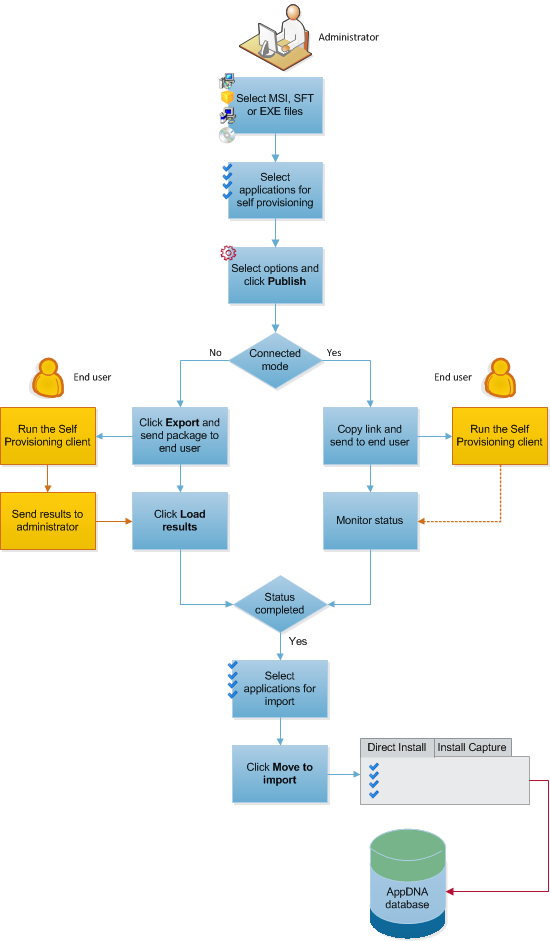Self-Provisioning
Aug 14, 2017
Self-Provisioning provides an alternative mechanism for capturing desktop applications for import into AppDNA and for packaging applications for App-V or XenApp, for example. The capture and packaging take place on a separate machine from AppDNA. This is called the Self-Provisioning client machine and can be any type of machine (virtual, physical, or VDI).
Self-Provisioning allows the capture process to be driven by an application expert who does not have access to AppDNA itself. The AppDNA administrator prepares and publishes control information that enables the application expert to perform the installation at a convenient time independently of AppDNA.
Self-Provisioning can be used with all types of desktop application installation packages (MSI and non-MSI) and App-V (.sft and .appv) packages.
The Self-Provisioning client uses a similar approach to Install Capture and is controlled by execution profiles. The execution profiles that are available for Self-Provisioning mirror those available for Install Capture. By default, the Snapshot execution profile is used. This takes a snapshot of the Self-Provisioning machine, installs the application, and then takes another snapshot of the machine. The difference between the state of the machine in the before and after snapshots represents the changes made by installing the application. The Self-Provisioning client uses this information to generate an MSI file for importing into AppDNA.
Self-Provisioning differs from Install Capture in that it does not reset the machine back to its original state. Therefore Citrix recommends that each capture is run on a clean machine. It is up to the administrator to decide how to handle this, whether by setting up a dedicated physical machine or by using a virtualization technology, such as VDI, which makes it easy to reset the state of the machine.
Self-Provisioning can be used in two modes:
- Connected. In this mode, the AppDNA and Self-Provisioning clients are both able to access a network file share.
- Disconnected. In this mode, the Self-Provisioning client and the AppDNA client are on different networks and do not both have access to the same network file share. In this mode AppDNA wraps the client instruction files and execution profile into a package that the administrator passes to the end user by FTP, for example. The end user in turn passes the output of the Self-Provisioning client to the administrator by FTP, for example.
The following diagram provides an overview of the Self-Provisioning process.

Note: A client instruction file is a control file used by the Self-Provisioning client to perform the capture or packaging task. Client instruction files are not human-readable instructions intended for end users.
 View PDF
View PDF

